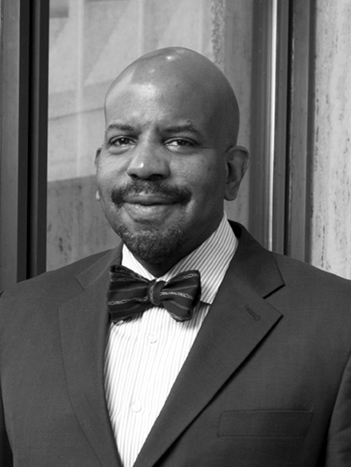Cato T. Laurencin
(1959- )
Orthopaedic Surgeon, Biomedical Engineer, Chemical Engineer, National Academy of Medicine Member, National Academy of Engineering Member

Cato T. Laurencin
Cato T. Laurencin, M.D., Ph.D., is chief executive officer of the Connecticut Institute for Clinical and Translational Science, director of the Institute for Regenerative Engineering, and the Van Dusen Endowed Chair in Orthopaedic Surgery at the University of Connecticut Health Center.
A nationally-prominent orthopaedic surgeon, biomedical engineer, and administrator, Dr. Laurencin is also a University Professor, Distinguished Professor of Orthopaedic Surgery, and a professor of chemical, materials, and biomolecular engineering at the University of Connecticut.
He previously was vice president for Health Affairs at the University of Connecticut Health Center and dean of the UConn School of Medicine—the first African American to lead all aspects of a majority academic medical center.
Before coming to UConn, Dr. Laurencin was the Lillian T. Pratt Distinguished Professor and chairman of orthopaedic surgery at the University of Virginia and was designated a University Professor by the president of the University of Virginia.
Dr. Laurencin earned his undergraduate degree in chemical engineering from Princeton University and his medical degree from Harvard Medical School, where he was a magna cum laude graduate. During medical school, he also earned his Ph.D. in biochemical engineering/biotechnology from the Massachusetts Institute of Technology.
Dr. Laurencin has been named to America’s Top Doctors and America’s Top Surgeons, and is a fellow of the American Surgical Association, the American College of Surgeons, and the American Academy of Orthopaedic surgeons. He was honored by the magazine Black Enterprise in its “America’s Leading Doctors” edition. In 2012, National Geographic Magazine featured his work in musculoskeletal tissue regenration in its "100 Discoveries that Changed Our World" edition. In 2013, the Society for Biomaterials awarded him its Technology, Innovation and Development Award for key scientific and technical innovation and leadership in trnaslational research.
Dr. Laurencin’s research involves tissue engineering, biomaterials science, nanotechnology, and stem cell science. He is an international fellow in biomaterials science and engineering and a fellow of the American Institute for Medical and Biological Engineering. His work was honored by Scientific American magazine as one of the 50 greatest achievements in science in 2008. Dr. Laurencin was the 2009 winner of the Pierre Galletti Award, medical and biological engineering’s highest honor, and was named one of the 100 Engineers of the Modern Era by the American Institute of Chemical Engineers.
Dr. Laurencin's work in mentoring students is well known. In 2009 he received the Presidential Award for Excellence in Science, Mathematics, and Engineering Mentoring from President Obama.
Dr. Laurencin has been a member of the National Science Foundation’s Advisory Committee for Engineering (ADCOM), and has served both on the National Science Board of the FDA and on the National Advisory Council for Arthritis, Musculoskeletal and Skin Diseases at NIH. He currently sits on the National Academy of Sciences Roundtable on Evidence Based Medicine, and on the National Academies Board on Life Sciences.
Dr. Laurencin is an elected member of the NAM and of the NAE. He is also an elected member of the Third World Academy of Sciences and the African Academy of Sciences.
Additional Information
Profile of Cato T. Laurencin, M.D., Ph.D.
White House Honors Dr. Cato Laurencin with National Medal of Technology and Invention




